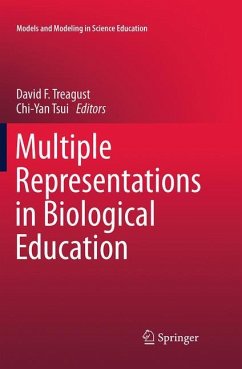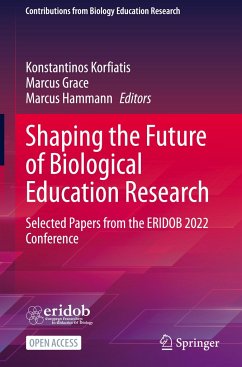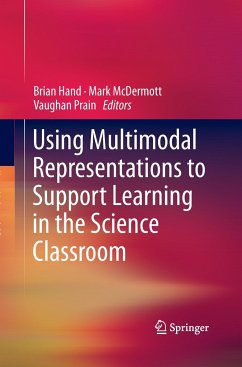
Multiple Representations in Biological Education
Versandkostenfrei!
Versandfertig in 6-10 Tagen
76,99 €
inkl. MwSt.

PAYBACK Punkte
38 °P sammeln!
This new publication in the Models and Modeling in Science Education series synthesizes a wealth of international research on using multiple representations in biology education and aims for a coherent framework in using them to improve higher-order learning. Addressing a major gap in the literature, the volume proposes a theoretical model for advancing biology educators' notions of how multiple external representations (MERs) such as analogies, metaphors and visualizations can best be harnessed for improving teaching and learning in biology at all pedagogical levels.The content tackles the co...
This new publication in the Models and Modeling in Science Education series synthesizes a wealth of international research on using multiple representations in biology education and aims for a coherent framework in using them to improve higher-order learning. Addressing a major gap in the literature, the volume proposes a theoretical model for advancing biology educators' notions of how multiple external representations (MERs) such as analogies, metaphors and visualizations can best be harnessed for improving teaching and learning in biology at all pedagogical levels.
The content tackles the conceptual and linguistic difficulties of learning biology at each level-macro, micro, sub-micro, and symbolic, illustrating how MERs can be used in teaching across these levels and in various combinations, as well as in differing contexts and topic areas. The strategies outlined will help students' reasoning and problem-solving skills, enhance their ability to construct mental models and internal representations, and, ultimately, will assist in increasing public understanding of biology-related issues, a key goal in today's world of pressing concerns over societal problems about food, environment, energy, and health. The book concludes by highlighting important aspects of research in biological education in the post-genomic, information age.
The content tackles the conceptual and linguistic difficulties of learning biology at each level-macro, micro, sub-micro, and symbolic, illustrating how MERs can be used in teaching across these levels and in various combinations, as well as in differing contexts and topic areas. The strategies outlined will help students' reasoning and problem-solving skills, enhance their ability to construct mental models and internal representations, and, ultimately, will assist in increasing public understanding of biology-related issues, a key goal in today's world of pressing concerns over societal problems about food, environment, energy, and health. The book concludes by highlighting important aspects of research in biological education in the post-genomic, information age.












